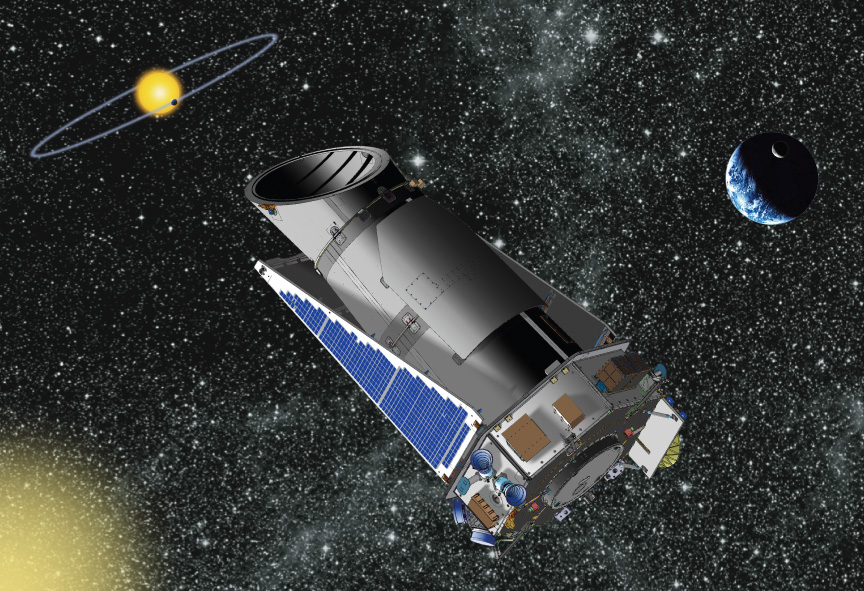Study: Large-scale “terminator events” cause solar tsunamis that drive the solar cycle
06/04/2020 / By Janine Acero

Whenever there is solar activity, scientists check to see when the sun will change its “mood” from calm to sudden bursts of activity, which they believe can lead to significant events of space weather. Therefore, they deem it important to predict when these “stellar tantrums” will happen.
The sun exhibits high levels of activity; it produces towering fountains of plasma and spits out “lava lamp blobs” of unknown matter that are 500 times larger than Earth. It also has a magnetic field that can snap and lash out into space every decade or so.
While studying the sun’s “stellar tantrum” — which spans 11 years or so and is characterized by a sudden increase in sunspot activity near its equator — authors of two recent studies have discovered an interesting new form of solar activity.
Solar tsunamis could be the missing link to sunspot cycles
There is increasing evidence that the presence of a new sunspot cycle is preceded by high-latitude magnetic events in the form of coronal bright points, polar crown filaments and ephemeral magnetic regions, known as the “extended solar cycle.” Scientists look at possible “precursor events” that may help predict the time of birth of a new sunspot cycle.
The researchers of the two recent studies noted that at the point when one sunspot cycle closes and the next one starts, the sun may experience huge magnetic field collisions called “terminator events,” which trigger colossal waves or tsunamis of plasma that can charge across the sun’s surface for weeks at a time. They believe that these solar tsunamis kickstart the appearance of sunspots near the sun’s mid-latitudes a few weeks after they start to disappear near the equator.
“We have observed the sunspot cycle for hundreds of years, but it’s been a mystery what mechanism could transport a signal from the equator, where the cycle ends, to the sun’s mid-latitudes, where the next cycle begins, in such a relatively short amount of time,” explained Mausumi Dikpati, senior scientist at the High Altitude Observatory in Boulder, Colorado and a co-author of both new studies. The scientists believe that solar tsunamis could be the missing link to the cycle.
In the first study, which appeared in Scientific Reports, the researchers looked at 140 years’ worth of solar observations taken from Earth and satellites. They tracked coronal bright points, or small loops of plasma that form over magnetic hotspots in the sun’s atmosphere. These points shine with extreme ultraviolet light before disappearing, usually within a single day. They can also occur during solar minimums, or less-active periods of solar activity. In contrast, sunspots appear only during solar maximums, or periods of high solar activity.
The researchers observed an interesting pattern on the appearance and disappearance of these bright points; they first appeared around 55 degrees latitude (about 20 degrees higher than sunspots), then migrated toward the equator by a few degrees latitude every year. Once the points reached about 35 degrees latitude, they began overlapping with sunspots. The points and spots continued moving toward the equator together for several years, then vanished in a terminator event. The researchers observed that bright points would always appear like clockwork in the sun’s mid-latitudes every few weeks.
The researchers noted that the solar tsunamis could be triggering the start of the next cycle in higher latitudes.
Collision of huge magnetic field lines could result in solar tsunamis
In the second study, which appeared in the journal Solar Physics, researchers explained how a collision between two huge magnetic field lines near the sun’s equator could result in dual tsunamis of plasma.
These “toroidal magnetic field lines,” so-called for their donut or toroid shape, may be responsible for the emergence of bright points and sunspots as they move across the sun’s surface.
The researchers believe that the field lines also serve as magnetic “dams” that trap plasma behind them as they advance toward the sun’s equator.
When two opposing field lines, such as those generated by north and south poles, meet at the equator, their opposing charges cancel each other out, resulting in “mutual annihilation” that releases the plasma trapped behind them in two massive tidal waves. These waves rush forward, bounce off each other, and surge backward toward the poles in the form of twin tsunamis.
These tsunamis reach the mid-latitudes of either hemisphere within a couple of weeks, where they meet with another set of magnetic field lines where bright points are already appearing for the next solar cycle. When the tidal waves hit the magnetic field lines, the former buoys the latter up toward the surface, resulting in the creation of sunspots that overlap with the bright points. The researchers believe this event fills in the gap between solar cycles.
Sources include:
Tagged Under: cool science, coronal bright points, discoveries, magnetic field, outer space, plasma, research, solar activity, solar cycle, solar physics, solar tsunami, space weather, sun, sunspots
RECENT NEWS & ARTICLES
COPYRIGHT © 2017 REAL SCIENCE NEWS



















